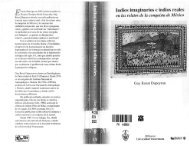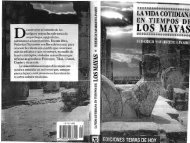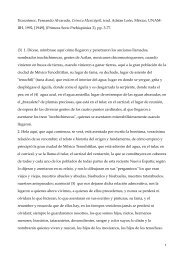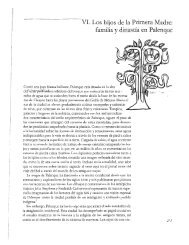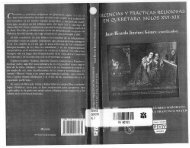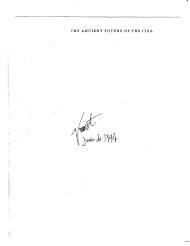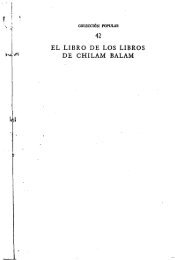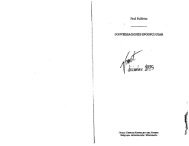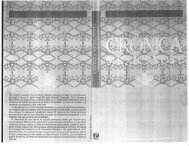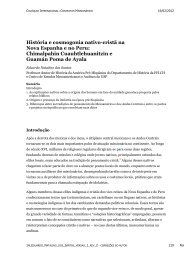HEAVEN BORN MERIDA AND ITS DESTINY - Histomesoamericana
HEAVEN BORN MERIDA AND ITS DESTINY - Histomesoamericana
HEAVEN BORN MERIDA AND ITS DESTINY - Histomesoamericana
You also want an ePaper? Increase the reach of your titles
YUMPU automatically turns print PDFs into web optimized ePapers that Google loves.
22 INTRODUCTION<br />
passages but is not mentioned in the katun histories. It may have ended<br />
in a balche ceremony.<br />
Act 9. Seating of the Katun. This is the main point of the ritual. The<br />
new Jaguar Priest, dressed in robes of jaguar and rattlesnake skin and with<br />
his face tied (i.e., masked), having been ceremonially designated ten years<br />
before, took his place on the throne and mat of the katun in the cycle seat<br />
(Merida for the Xiu, Mayapan for the Itza).<br />
Act 10. Seating of the Yearbearers. These were local priests; each city<br />
had its own set of four, each identified with and by a direction color.<br />
They were probably thought to represent not only the years but also the<br />
gods of death, wind, sun, rain, and fire. The "high fan" may have been part<br />
of their paraphernalia.<br />
Act 11. Pacing of the Katun. This was a ceremonial procession of seven<br />
priests, the Pacers (uuc taz cab), with a surveying stick [p'iz te), who ritually<br />
confirmed land-titles. The corresponding references in the katun histories<br />
are to settling, tying, bearing, dividing, and measuring the land, as<br />
well as to payment of tribute.<br />
Act 12. Dawn. This was the moment for the counting (ranking) of the<br />
mats (of the lords) and for accepting "requests," that is, applications for<br />
future offices. This was in many respects the most political moment of<br />
the drama, since what was at stake were not only the priesthoods but also<br />
the positions of governor (hal ach uinic) and "fathers of the rope" [ba<br />
tabob) of the subject towns and cities. A declaration of candidacy in this<br />
ceremonial context was like the ritual of nomination at a national convention<br />
in the United States, and the ceremonial recognition mattered.<br />
Act 13. Sacrifice. In the katun histories the references to sacrifice are<br />
euphemistic and elliptical. They are a little more explicit elsewhere. The<br />
heart sacrifice ("painless death"), the arrow sacrifice, hanging, burning,<br />
and drowning were the principal forms, but often the only reference is to<br />
the accompanying music: the drum and rattle of the katun.<br />
Act 14. Examination. The examination ceremony was always accompanied<br />
by a feast at which aspirants to lordship were tested by ritual riddles<br />
(chapters 30 and 31). Naturally most of these concerned food, but examinations<br />
are also referred to in the katun histories in more or less riddle<br />
form: the food and water of the katun, its speech, judgment, and "face."<br />
Act 15. The Word. The general character and fate of the katun are always<br />
given in the katun histories, usually in a terse riddle, metaphor,<br />
kenning, or keyed couplet: shield and arrow, lying and crazy, quetzal and<br />
blue bird, gods, sticks and stones, hanging, church, war, full swollen, locust,<br />
cord and rope, feast and famine. This was presumably announced by<br />
the new Spokesman of the Jaguar.<br />
Act 16. Penance. References in the katun prophecies to work, hunger,<br />
poverty, sins, burning, need, and lamentation normally follow the imagery<br />
of act 15. There is also reference to the gourd, bowl, and cup of the katun.<br />
I believe that all this refers to the continence, fasting, and bloodletting expected<br />
of the lords and that this was the point at which they collected<br />
their own blood in bowls and offered it to the gods. The yearbearers were



